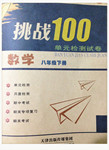题目内容
【题目】听一段材料,回答下面几个小题。
【1】Where does the conversation take place?
A. At an airport.
B. On a plane.
C. At a duty free shop.
【2】What does the man think of the prices of the items in the duty-free shop?
A. Very high.
B. Low.
C. A little high.
【3】Which of the following is right?
A. The man is from the States.
B. The man has arrived in a foreign country.
C. It took him a long time to get through the Immigration
【答案】
【1】A
【2】C
【3】B
【解析】听力原文:
W: Excuse me. I'm with the airport office. I'm doing a survey. Can I ask you some questions?
M: Sure. Go ahead.
W: How do you feel about the arrival area? Were you happy with it?
M: Yes, but it's a long way from the gate to the Immigration.
W: Oh, I'm sorry about that. Well, how about Immigration? How long did it take you to get through?
M: Oh, it's really quick-it took me only about 3 or 4 minutes.
W: Oh, good. OK, then, I see you bought some duty free items. Were you happy with the prices?
M: Well, I thought they were a little high.
W: A little high? Compared to…?
M: Oh, to most places in Asia— although I will say the prices seem lower here than in the States.
W: I see. Well, how about the general appearance of the airport?
M: Oh, excellent. It's about the cleanest airport I've ever been in.
W: So, all in all it is clean and efficient?
M: Yes, oh, I've got to go, here comes my suitcase.

 挑战100单元检测试卷系列答案
挑战100单元检测试卷系列答案